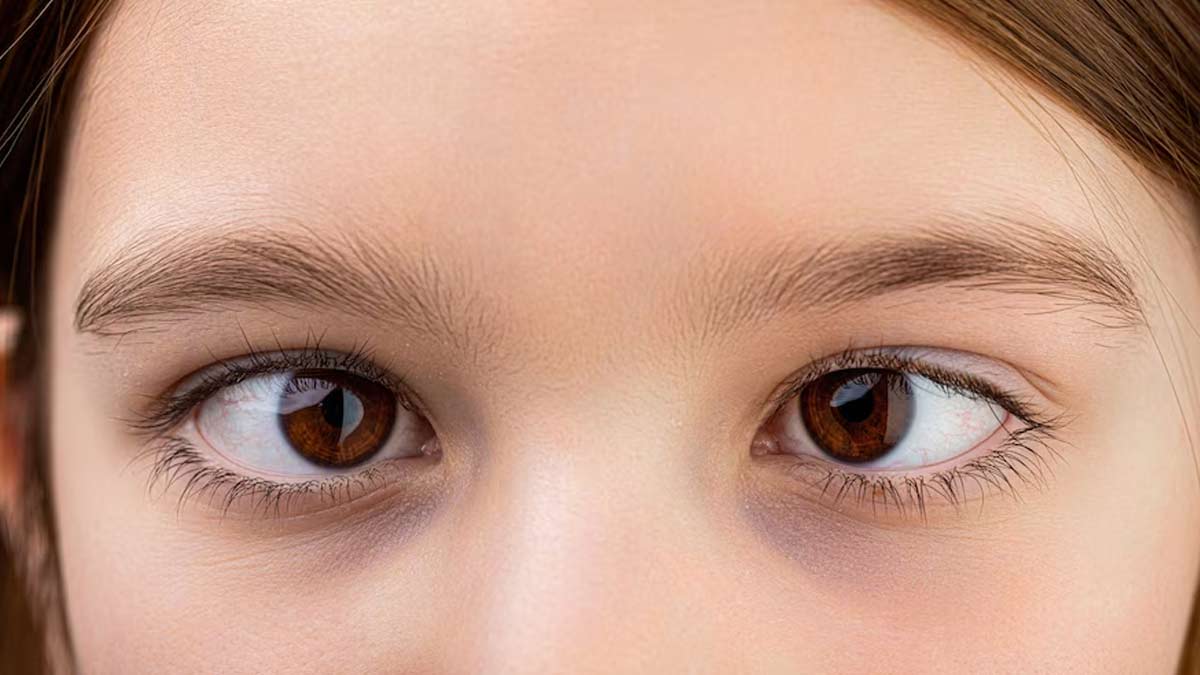
Dancing Eye Syndrome or Opsoclonus-Myoclonus Syndrome (OMS) is a rare neurological disorder which affects mostly kids but is also associated with adults. This condition is characterised by quick and irregular eye movements known as opsoclonus and sudden jerky movements involving muscles of the body, myoclonus. We spoke to our expert Dr Mary Varghese, MBBS, DOMS, MS, Ophthalmology, Apollo Spectra Hospital, Bengaluru, who explained this condition.
Table of Content:-
According to the National Institute of Neurological Disorders and Stroke, in young children, OMS is typically associated with tumours that prompt the immune system to attack the nervous system, often leading to sudden and severe symptoms. In adults, the syndrome is commonly linked to lung or breast cancers but can also occur independently or after bacterial or viral infections. Fortunately, OMS is generally non-fatal.
Symptoms Of Dancing Eye Syndrome

- Patients suffer from opsoclonus, which is rapid, involuntary eye movements in all directions, associated with Myoclonus which are sudden, involuntary muscle contractions in the limbs and trunk.
- Ataxia, which results in problems with balance and coordination, is also experienced by patients.
- Some symptoms that children might present include aggressive behaviour, hyperactivity or mood swings.
According to a 2022 study, This condition typically presents with distinctive eye movement disorders, myoclonus, ataxia, irritability, and sleep disturbances. In approximately 50% of children with OMS, there is an underlying neuroblastoma.
Also Read: Struggling With Strabismus? Check Out For Its Symptoms, Prevention, And Treatment
Causes Of Dancing Eye Syndrome
“The cause of this condition is still unknown, although various factors may have contributed to its development. It may be associated with viral diseases or autoimmune diseases in which the body’s immune system attacks its tissues and organs, possibly leading to neuroblastoma, an umbrella term for a group of childhood cancers,” said Dr Varghese.
Diagnosis For Dancing Eye Syndrome

Diagnosing this syndrome may involve a physical examination with neurological tests and imaging studies, such as MRI or CT scans of the brain. “This is done to evaluate structural abnormalities, perform an electroencephalogram to assess abnormal brain waves and conduct blood tests to rule out infections or autoimmune features associated with this condition,” highlighted Dr Varghese.
Prognosis For Dancing Eye Syndrome
The prognosis for patients with OMS depends on the condition's severity and determines the expected outcomes. Sudden recovery might be observed in some cases, whereas in others, neurological abnormalities may persist for the rest of the patient’s life. The treatment of such diseases is very essential in the early stages to contain the symptoms and improve the total results.
Also Read: Evaporative Dry Eye: Expert Explains Its Causes, Symptoms, And Treatment
Treatment For Dancing Eye Syndrome

Treatment for this syndrome focuses on managing symptoms and addressing underlying causes. Here are some of the treatment measures as listed by the expert:
- Corticosteroids and immunotherapy are some of the drugs that may be given to a patient to create a suppressant effect on the immune system and inflammation, especially in cases that are related to autoimmune diseases.
- Myoclonus and other seizure-like movements can be managed with anti-epileptic medications.
- Physiotherapy and occupational therapy help restore balance, coordination, and muscle strength.
Bottomline
Dr Varghese concluded, “The effects of Dancing Eye Syndrome may be difficult to manage, but with early treatment and proper assistance, most people can lead normal lives. Awareness, early diagnosis, and advancing research efforts, can enhance treatment effectiveness and the lives of those coping with this rare condition.”
[Disclaimer: This article contains information provided by an expert and is for informational purposes only. Hence, we advise you to consult your own professional if you are dealing with any health issues to avoid complications.]
Also watch this video
How we keep this article up to date:
We work with experts and keep a close eye on the latest in health and wellness. Whenever there is a new research or helpful information, we update our articles with accurate and useful advice.
Current Version